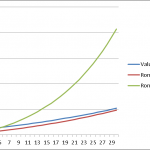FQHC Provider Productivity Lags Expectations
The actual productivity of FQHC family practice physicians averages about 14% less than what is planned for on a daily basis, and about 11% below expectations on an annual basis. While productivity against expectations is somewhat higher in an incentive environment, the average family practice physician participating in an incentive plan still falls 11% and 5% below daily and annual targets, respectively. While “locum tenens” may fill in some of the gap when providers are not at work, health centers may be experiencing a shortfall of almost 440 patient visits per provider, per year, against their plans.
Merces 2015-2016 FQHC Provider Productivity & Compensation Survey collected data on more than 2,200 medical, dental and mental health providers from 57 health centers across the country. Conducted in the last six months of 2015, the study gathered information on both expected performance organization-wide and actual performance of individuals. Information on compensation methods and actual pay was collected and analyzed along with daily and annual productivity expectations.
The “average” health center expects a full-time family practice physician to see 18.2 patients per day, and in 214 “full” work days, to see 3,917 patients per year. As noted above, actual performance is significantly lower — the average family practice physician actually saw only 15.1 patients per day and just 3,192 annually. The current average annual salary for full-time family practice physicians is just about $178,500; about 93% of W-2 compensation comes from base salary — the remainder is combination of productivity earnings, other bonuses and other forms of “reportable” compensation.
Similar findings appear among most of the fourteen different types of providers (including mid-levels) studied. A number of factors are considered in the various analyses, including providers’ personal characteristics and the characteristics of the health centers. As previously reported, health centers appear to be compensating female providers at lower levels than similarly situated (and performing) males.
More information will be provided in the coming days; for information on how to purchase a copy of the report, contact Merces at research@mercesconsulting.com.




